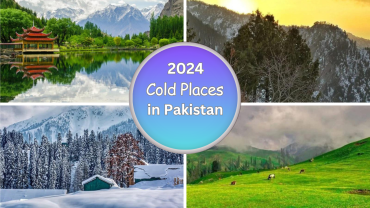Hunza Valley
Hunza, a jewel settled in the core of Pakistan’s Gilgit-Baltistan locale, is where the excellence of nature meets exceptionally old culture. Encircled by the glorious pinnacles of the Karakoram Reach, this valley is prestigious for its amazing scenes, completely clear waters, and the warm friendliness of its kin. Hunza’s appeal lies in its grand excellence as well as in its rich history and social legacy, reflected in old fortresses, energetic nearby practices, and the remarkable lifestyle of its occupants.
The valley wakes up with the sprout of apricot blooms in spring, transforming the scene into an entrancing range of pink and white tints. The mid year months offer ideal climate for investigating Hunza’s normal miracles, including the tranquil Attabad Lake, the old Baltit and Altit strongholds, and the Passu Cones, known for their particular shape and greatness. The harvest time season paints the valley in splendid shades of gold and golden, offering a scene that draws picture takers and nature darlings from across the globe.
Hunza isn’t simply an objective; an encounter contacts the spirit. Whether it’s the serene mornings with perspectives on the superb Rakaposhi Pinnacle, the comfortable strolls through terraced fields, or the twilight evenings under the unmistakable skies, Hunza offers a tranquil retreat and an opportunity to reconnect with nature. With its captivating magnificence, rich social embroidery, and the incredible life span of its kin, Hunza stays a heaven on the planet, promising recollections that endure forever.
Hunza Climate/Climate Hunza
Hunza Valley, settled in the sublime Karakoram Reach, encounters an exceptional environment that emphasizes its normal magnificence across seasons. Spring in Hunza is something else, as the valley stirs with apricot blooms covering the scene in a fragile pink shade. The temperatures during this season are gentle and welcoming, making it an optimal time for journeying and touring. The unmistakable skies and delicate breezes supplement the sprouting vegetation, making a pleasant setting that spellbinds each guest.
As summer unfurls, Hunza relaxes in the glow of the sun, with temperatures going from an agreeable 20°C to 30°C. This season is ideally suited for investigating the valley’s regular miracles, from the serene waters of Attabad Lake to the lofty icy masses and transcending tops that encompass the region. The long, radiant days give enough of a chance to dig into Hunza’s rich social legacy and partake in the outside experiences it offers.
Fall carries a sensational change to the valley, as the rich plant life gives approach to staggering shades of gold, orange, and red. The cooler temperatures and the fresh air make it a most loved time for the vast majority to visit, offering stunning perspectives and a tranquil climate. Winter in Hunza is a serene period, with snow-covered scenes and tranquil, calm evenings. Albeit the temperatures can decrease fundamentally, the colder time of year season has its own appeal, offering a quiet and pleasant magnificence that is both entrancing and significant.
Area and Openness
Hunza Valley is situated in the Gilgit-Baltistan district of Northern Pakistan. In spite of its rugged territory, the valley is moderately available thanks to the very much kept up with Karakoram Parkway.
Social and Verifiable Importance
Hunza Valley is saturated with history and social legacy. When a piece of the Silk Street, it has been a gathering point for various societies, a reality reflected in the nearby traditions, customs, and dialects.
The Captivating Magnificence of Hunza Valley
Normal Attractions
From taking off mountain tops and glasslike waterways to fruitful patios and blossoming plantations, Hunza Valley brags a heap normal marvels. The turquoise Attabad Lake, the transcending Rakaposhi Pinnacle, and the rambling apricot blooms are only a couple of the features.
Widely varied vegetation
Home to a different scope of widely varied vegetation, the valley offers sufficient chances for untamed life lovers and botanists.
Life in Hunza Valley
Individuals of Hunza
Known for their life span, individuals of Hunza are warm, affable, and famous for their high proficiency rates. They are frequently perceived for their solid way of life and novel eating routine.
Hunza Valley
The Interesting Food
The nearby food of Hunza is pretty much as special as the actual valley. Dishes like “chap shuro” (meat-filled bread) and “giyaling” (entire wheat pasta) are must-attempts, also the tasty apricot cake for dessert.
Investigating the Marvels of Hunza Valley
1. Glorious Pinnacles and Climbing Trails:
Hunza is encircled by fantastic mountain pinnacles like Rakaposhi, Ultar Sar, and Diran. These mountains, frequently covered with snow, give an amazing scene. For experience fans, there are various climbing trails. The climb to the headquarters of Rakaposhi, quite possibly of the greatest mountain on the planet, is a famous decision.
2. Verifiable Fortresses:
The valley flaunts verifiable locales like the Baltit and Altit Fortresses. Baltit Post, remodeled and changed over into a historical center, gives an understanding into the living style of the nearby regal family who lived there many quite a while back. Altit Stronghold, the most seasoned landmark in the Gilgit-Baltistan district, gives a pleasant perspective on the Hunza Waterway and the valley.
3. Attabad Lake:
This turquoise blue lake was framed because of a huge avalanche in 2010. In spite of its disastrous beginning, the lake’s excellence is unrivaled and it’s a well known spot for drifting and photography.
4. Neighborhood Culture and Food:
Individuals of Hunza, known for their cordiality and life span, have a rich culture that incorporates music, dance, and an extraordinary food. Guests can enjoy nearby dishes like Chapshuro (a neighborhood pizza) and Mamtu (dumplings), and relish the renowned Hunza tea.
5. Karimabad:
This is the principal town in Hunza Valley and a must-visit spot. The town gives a charming perspective on the valley and is home to a few lodgings, shops, and diners. Nearby crafted works, gemstones, and dried organic products are famous purchases.
6. Apricot Bloom Season:
In spring, the valley is flooded with the pink and white blooms of apricot trees. Local people develop apricots widely, and dried apricots from Hunza are eminent for their character.
7. Hawk’s Home:
For an entrancing perspective on the dawn or dusk, an outing to Bird’s Home is an unquestionable requirement. A high perspective gives a 360-degree all encompassing perspective on the whole Hunza Valley.
8. Khunjerab Pass:
The excursion to Hunza is incomplete without a visit to Khunjerab Pass, the world’s most elevated cleared global boundary crossing and the most elevated point on the Karakoram Thruway. It offers amazing perspectives on the snow-covered mountains.
Arranging Your Visit to Hunza Valley
1. Best Opportunity to Visit:
Hunza Valley is lovely consistently, however the best chance to visit relies upon what you need to see. If you have any desire to observe the valley in full sprout, spring (Walk to May) and summer (June to August) are the best times. For the people who wish to encounter the tranquil snowfall, winter (December to February) is great. The fall season (September to November), when the leaves change tones, likewise offers a stunning scene.
2. The most effective method to Reach:
As recently referenced, Hunza can be reached by street by means of the Karakoram Parkway from Islamabad, or via air to Gilgit followed by a 2-3 hour drive.
3. Where to Remain:
Hunza offers a scope of convenience choices from lavish inns to spending plan guesthouses. A few well known choices remember the Serena Lodging for Gilgit, and Hawk’s Home Inn in Duikar for their staggering perspectives.
4. Wellbeing and Security:
Hunza is by and large a protected spot to visit. Notwithstanding, assuming that you are wanting to go on journeys or climbs, guarantee you are in great shape and have the vital stuff. Additionally, the UV beams can serious areas of strength for be to the high elevation, so conveying and consistently applying sunscreen is prudent.
5. What to Pack:
Contingent upon the season, comfortable attire is fundamental. Open to strolling shoes are an unquestionable requirement, given how much investigation by walking. Remember basics like a decent quality camera, sunscreen, shades, and a cap.
6. Nearby Network:
Portable organization inclusion is by and large great in Hunza and encompassing regions. Significant Pakistani cell networks offer administrations in the district. Web network is accessible in many lodgings and guesthouses.
7. Nearby Traditions:
Individuals of Hunza are cordial and affable. Regard nearby traditions and customs, and request consent prior to taking photos of individuals.
8. Itinerary:
Plan your agenda ahead of time to cover key attractions like Karimabad, Altit and Baltit fortresses, Attabad Lake, and the Pasu Cones. Assuming that your visit is during the cherry bloom or apricot season, designate an opportunity to partake in the regular magnificence basically.
9. Food:
Try not to botch the potential chance to attempt neighborhood Hunza cooking. The region is especially known for its sound and delightful food, particularly apricot-related items.
Conclusion
A visit to Hunza Valley is an excursion into a land where nature’s glory interlaces with a rich social embroidery. From remarkable scenes to verifiable fortunes, and from culinary joys to the warm neighborliness of its kin, Hunza Valley offers a genuinely captivating travel insight.
FAQs about Hunza Valley
Where is Hunza Valley found?
Hunza Valley is arranged in the Gilgit-Baltistan locale of Pakistan, encompassed by the amazing Karakoram mountain range.
What is the best opportunity to visit Hunza Valley?
The best chance to visit Hunza is from April to October when the weather conditions is lovely, and the regular magnificence of the valley is at its pinnacle. Spring (April to June) is particularly lovely with apricot blooms, while pre-winter (September to October) features dazzling fall foliage.
What are the must-visit attractions in Hunza Valley?
Key attractions incorporate the Altit and Baltit posts, Attabad Lake, Passu Cones, Husseini Engineered overpass, and the Karimabad market for nearby painstaking work.
How is the climate in Hunza Valley?
Hunza Valley encounters a rugged environment with gentle summers (20°C to 30°C) and cold winters, frequently with snow. Spring and pre-winter offer moderate temperatures and are known for their normal magnificence.
Are there great convenience choices in Hunza Valley?
Indeed, Hunza Valley offers a scope of convenience choices from lavish lodgings to comfortable guesthouses and eco-accommodating retreats. Numerous lodgings give dazzling perspectives on the encompassing mountains and agreeable conveniences.
Could I at any point track down financial plan lodgings in Hunza Valley?
Totally, Hunza has different financial plan well disposed housing choices that offer fundamental conveniences and an agreeable stay, guaranteeing that guests can partake in the magnificence of Hunza without overspending.
Is Hunza Valley ok for vacationers?
Hunza Valley is for the most part thought to be alright for vacationers. Local people are known for their cordiality and inviting nature. Nonetheless, remaining refreshed on tourism warnings and regard neighborhood customs and traditions is generally savvy.
What exercises might I at any point do in Hunza Valley?
Hunza offers various exercises including traveling, social visits, photography, investigating antiquated fortresses, drifting in Attabad Lake, and encountering the nearby cooking and culture.





Comment (0)